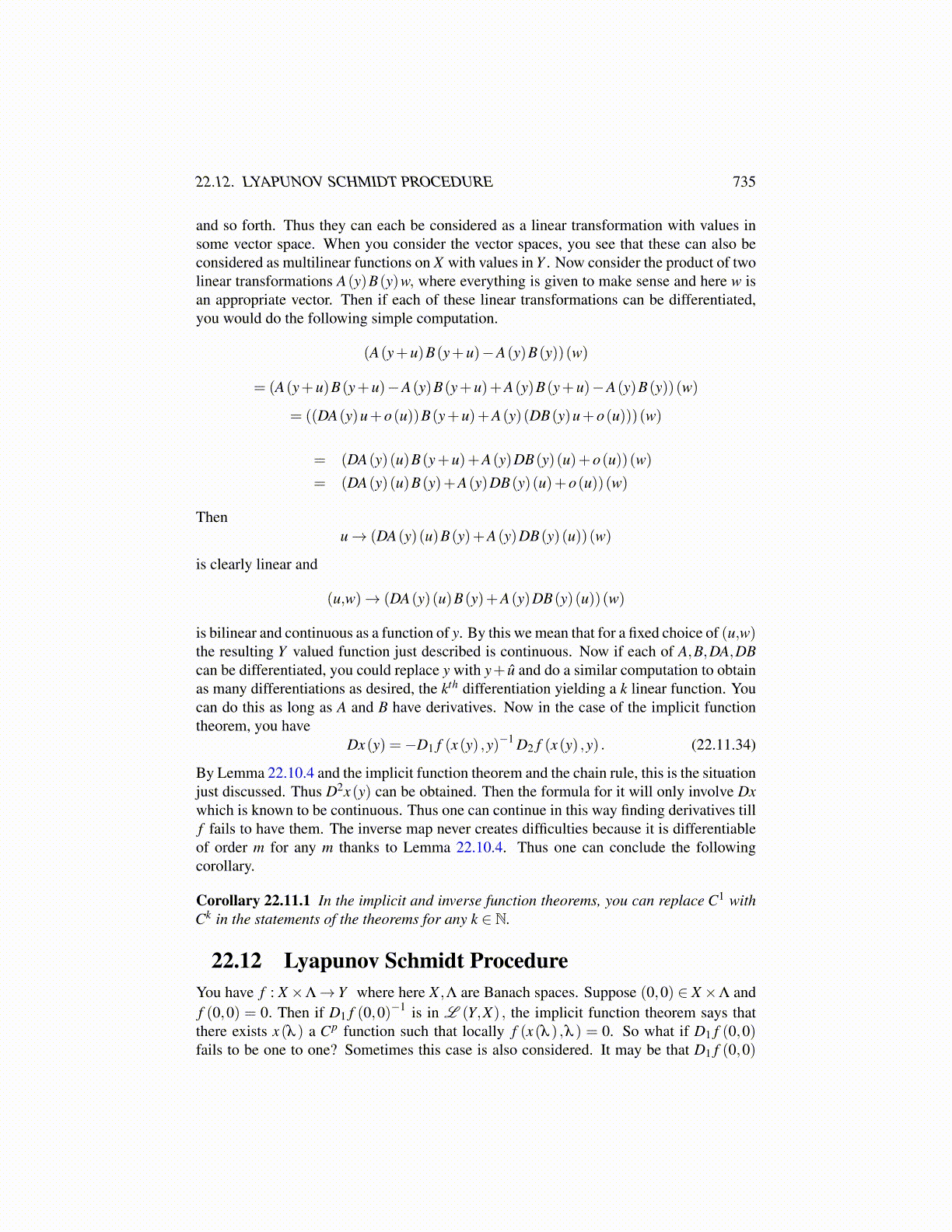
22.12. LYAPUNOV SCHMIDT PROCEDURE 735
and so forth. Thus they can each be considered as a linear transformation with values insome vector space. When you consider the vector spaces, you see that these can also beconsidered as multilinear functions on X with values in Y . Now consider the product of twolinear transformations A(y)B(y)w, where everything is given to make sense and here w isan appropriate vector. Then if each of these linear transformations can be differentiated,you would do the following simple computation.
(A(y+u)B(y+u)−A(y)B(y))(w)
= (A(y+u)B(y+u)−A(y)B(y+u)+A(y)B(y+u)−A(y)B(y))(w)
= ((DA(y)u+o(u))B(y+u)+A(y)(DB(y)u+o(u)))(w)
= (DA(y)(u)B(y+u)+A(y)DB(y)(u)+o(u))(w)
= (DA(y)(u)B(y)+A(y)DB(y)(u)+o(u))(w)
Thenu→ (DA(y)(u)B(y)+A(y)DB(y)(u))(w)
is clearly linear and
(u,w)→ (DA(y)(u)B(y)+A(y)DB(y)(u))(w)
is bilinear and continuous as a function of y. By this we mean that for a fixed choice of (u,w)the resulting Y valued function just described is continuous. Now if each of A,B,DA,DBcan be differentiated, you could replace y with y+ û and do a similar computation to obtainas many differentiations as desired, the kth differentiation yielding a k linear function. Youcan do this as long as A and B have derivatives. Now in the case of the implicit functiontheorem, you have
Dx(y) =−D1 f (x(y) ,y)−1 D2 f (x(y) ,y) . (22.11.34)
By Lemma 22.10.4 and the implicit function theorem and the chain rule, this is the situationjust discussed. Thus D2x(y) can be obtained. Then the formula for it will only involve Dxwhich is known to be continuous. Thus one can continue in this way finding derivatives tillf fails to have them. The inverse map never creates difficulties because it is differentiableof order m for any m thanks to Lemma 22.10.4. Thus one can conclude the followingcorollary.
Corollary 22.11.1 In the implicit and inverse function theorems, you can replace C1 withCk in the statements of the theorems for any k ∈ N.
22.12 Lyapunov Schmidt ProcedureYou have f : X ×Λ→ Y where here X ,Λ are Banach spaces. Suppose (0,0) ∈ X ×Λ andf (0,0) = 0. Then if D1 f (0,0)−1 is in L (Y,X) , the implicit function theorem says thatthere exists x(λ ) a Cp function such that locally f (x(λ ) ,λ ) = 0. So what if D1 f (0,0)fails to be one to one? Sometimes this case is also considered. It may be that D1 f (0,0)